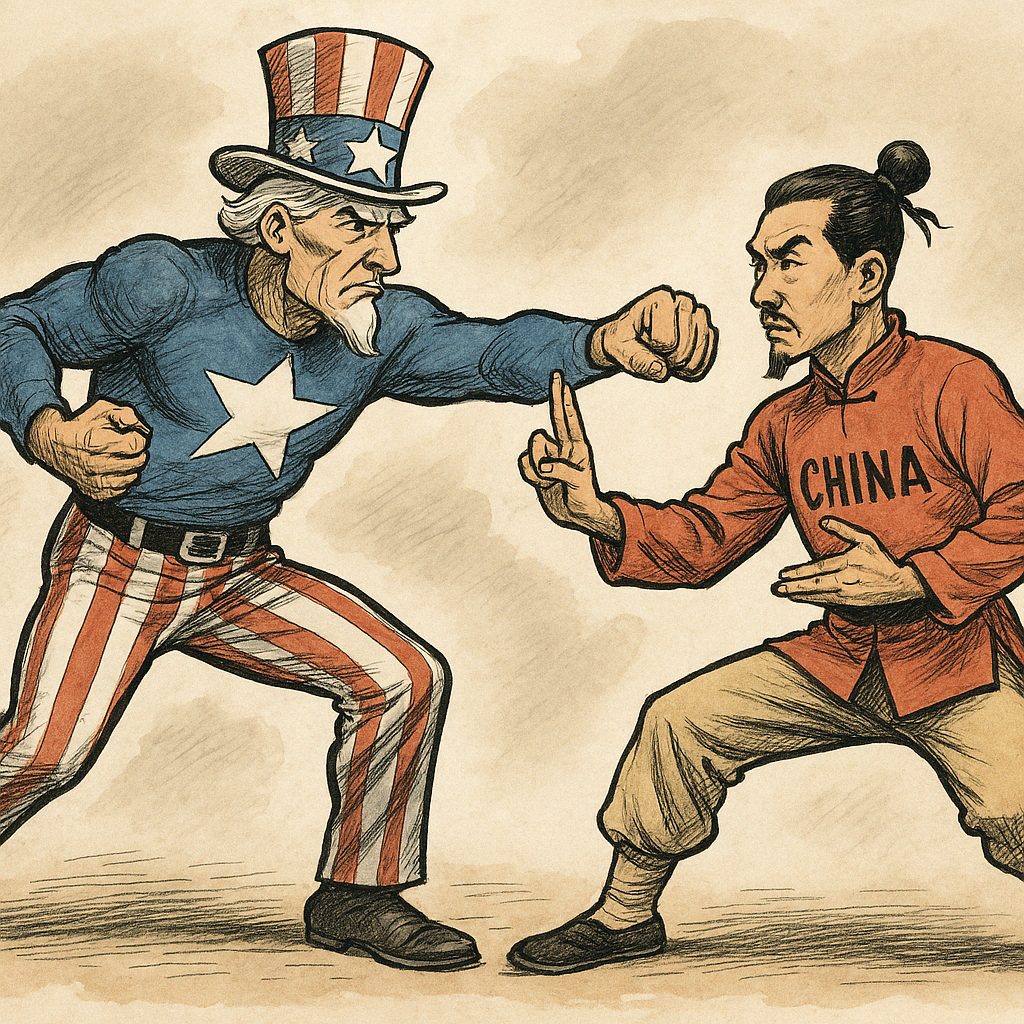Contents
Introduction:
Chinese foreign trade sector is facing unprecedented challenges across almost all fields. From small export-driven manufacturers to large state-owned enterprises operating in strategic industries, companies throughout the sector are struggling with shifting global demand, geopolitical tensions, and rising operational costs. This is no longer a temporary disruption, but rather a structural transformation. Foreign trade companies, logistics providers, cross-border e-commerce platforms, and traditional OEM factories alike are encountering a crisis. The rules of Global Trade are being rewritten, and China finds itself at the center of this silent economic war.
As we consider the future of China’s foreign trade, we must confront a harsh reality: this is the most complex period since China joined the WTO. The United States has imposed tariffs of up to 125% on Chinese goods, the EU has launched successive anti-subsidy investigations, and global trade protectionism has reached record levels, further intensified by geopolitical conflicts and the restructuring of global supply chains. This article will analyze in depth the difficulties currently facing China’s foreign trade sector, the evolution of the international policy environment, and strategic responses from Chinese enterprises.
I. Chinese Foreign Trade Sector: A Multifaceted Crisis
For China, the current situation is growing increasingly unfavorable. An increasing number of foreign trade companies are closing their operations in China. Meanwhile, foreign direct investment (FDI) has dropped to its lowest level in decades, signaling growing caution among international investors.
At the same time, Chinese exporters are finding it increasingly difficult to secure new clients. Even in the traditionally strong U.S. market, demand has declined significantly. Ironically, despite fewer buyers, most importers are no longer willing to accept previous pricing. Chinese suppliers are experiencing a painful squeeze—with falling orders, declining prices, and growing operational risks. These challenges can be divided into four key areas:
- Market Fragmentation: The rapid contraction of traditional pillar markets The U.S. and EU have shifted from growth engines to contraction zones: in 2024, exports to the U.S. grew by only 3.1%, while the EU market suffered from an energy crisis, with Germany even experiencing negative growth. Emerging markets are not yet capable of filling this gap. Though ASEAN now accounts for 36.9% of China’s exports, its per capita consumption is only one-fifth of that in the U.S. and EU.
- Traditional Industry Crisis: A painful period of industrial upgrading China’s labor-intensive industries are irreversibly relocating, but mid-tech industries (such as machinery and chemical materials) have developed global competitiveness. The next step is to break through bottlenecks in chip design and industrial software, transitioning the export structure from a low-to-mid-end dominance to a balanced high-and-mid-end model.
- Technological Bottlenecks: Systematic pressure on high-end breakthroughs Strategic sectors like semiconductors and new energy have become geopolitical flashpoints. The U.S. has banned batteries from six Chinese companies, while the EU has launched anti-subsidy investigations into electric vehicles. China’s share of high-tech exports has dropped from 40.8% to 37.9%, while its import dependence has risen to 67.4%, exposing imbalances in the supply chain.
- Dual Cost Pressures: Labor-intensive industries on the brink Traditional sectors such as textiles and footwear are under dual pressure: Southeast Asia’s cost advantage and declining demand from the West. In 2024, exports in these sectors dropped by more than 10%. A toy factory manager in Dongguan noted, “Vietnamese workers earn one-third of Chinese wages, yet Western clients still demand a 15% price cut.”
II. China’s Four Core Strategies in Response to U.S. Tariff Escalation
China has developed a systematic countermeasure framework in response to U.S. unilateral tariff pressure, balancing precision and strategic depth in a great power contest:
- Reciprocal Countermeasures and Rule-based Engagement China adopted a stepwise tariff increase from April 4, raising duties on U.S. imports from 34% to 125%. It filed complaints through the WTO and rallied 45 countries, including the EU, to oppose U.S. violations of trade norms. Simultaneously, China listed 28 U.S. entities on its export control list, restricting exports of rare earths and semiconductor materials to target the U.S. new energy and defense industries. This rule-for-rule, strength-for-strength approach both protects national interests and reinforces China’s voice in the multilateral trade system.
- Supply Chain Resilience Building In response to U.S. technological containment, China is accelerating the development of an independent and controllable supply chain system:
- Technological Breakthroughs: Companies like Huawei and SMIC have received state support to localize 28nm chip production. Advanced products such as maglev equipment and AI chips have surpassed 30% global market share.
- Global Diversification: Firms are establishing factories in Southeast Asia (e.g., Leju Robotics in Vietnam) and using transshipment hubs in Latin America (e.g., auto parts via Mexico) to bypass tariffs, while expanding the China-Europe Railway (with cargo volume up 40% in 2024).
- Domestic Demand Activation and Dual Circulation Foreign trade companies are shifting towards the domestic market, with internal sales in Guangdong and Fujian reaching 28%. Flexible production models meet both domestic and overseas demand. The government has launched “export-to-domestic” initiatives, supported by platforms like JD and Hema, unlocking the consumption potential of 1.4 billion people and offering strategic depth for industrial upgrading.
- Targeted Countermeasures Two recent actions directly struck U.S. vulnerabilities:
- Strategic Mineral Control: Export restrictions on tungsten, gallium, and germanium (80% of global output) impact U.S. semiconductor and aerospace industries.
- Intellectual Property Investigations: Probes into licensing fees from Apple and Microsoft may result in heavy fines or market access barriers. These low-cost, high-impact actions have been dubbed “acupuncture strikes” by international media.
III. China’s National Power: Building Systemic Defenses
- Precision Policy Tools
- Tariff Countermeasures: 125% duties on U.S. goods with a dynamic matching mechanism.
- Financial Support: Manufacturing medium-to-long-term loan growth at 14.8%; over 600,000 companies covered by export credit insurance.
- Rule Engagement: Deepening ASEAN cooperation via RCEP and aligning digital trade standards in CPTPP negotiations.
- Supply Chain Safety Nets 28 U.S. entities are subject to export controls; quotas implemented for rare earths and photovoltaic materials. China is also building logistics infrastructure across Belt and Road ports and rail lines, with China-Europe freight volumes up 40% in 2024.
- Innovation Ecosystem Development A 50-billion-yuan transformation fund supports next-generation technologies. In January-February 2025, NEV exports rose 21%, and maglev equipment achieved a 30% global market share, highlighting policy-market synergy.
IV. Chinese Companies Break Through: Real-World Examples
- Market Diversification: From single-market reliance to global outreach
- Regional Focus: Ningbo firms expand into Eastern Europe; Mexico becomes a new auto parts hub.
- Model Innovation: TikTok live-streaming drives orders from South America; cross-border e-commerce penetration exceeds 35%.
- Climbing the Value Chain Jiang Bolong acquired a Brazilian semiconductor firm to set up an overseas R&D center; Sunshine Lighting raised R&D investment to 8%, proving that “there are no sunset industries, only sunset technologies.”
- Domestic Demand Feedback Loop Guangdong’s internal sales grew from 15% to 28%. Fujian’s textile industry uses flexible production to serve both domestic and international customization needs. Economist Tian Lihui noted: “The consumption upgrade of 1.4 billion people is the strongest strategic depth for foreign trade companies.”
V. Current Status of the Chinese Foreign Trade Sector: Clarifying the “Suspension of U.S. Tariffs”
As of April 15, 2025, the United States has not officially suspended high tariffs on Chinese goods. The current situation must be understood from two perspectives:
- Temporary Exemptions Are a Smokescreen On April 11, a 10-hour technical failure in the U.S. customs system resulted in missed tariff collections, but importers were later required to pay the difference. The U.S. also delayed new tariffs on electronics like smartphones and laptops by 90 days. However, Commerce Secretary Rutnik emphasized this was merely to buy time for a new 25% semiconductor tariff. These actions are short-term inflation control measures; the 125% tariff on core Chinese goods remains in effect.
- “Digital Manipulation” in U.S. Tariff Policy Claims of a global tariff pause are misleading. Only 60 economies that did not retaliate against the U.S. saw delays, while China remains under full 125% tariffs. China responded: “If the U.S. continues to manipulate tariff data, we will not engage,” and instead focused on long-term countermeasures such as rare earth controls and supply chain restructuring.
Conclusion:
Today, the Chinese foreign trade sector is no longer engaged in a simple market competition—it more closely resembles a martial arts duel. One opponent is tall and powerful, delivering heavy punches. The other, though shorter, is agile, dodging strikes and aiming for pressure points. Who will win in the end? The answer may not come soon. But every strike and every move in this silent economic war is already reshaping the global trade landscape.



